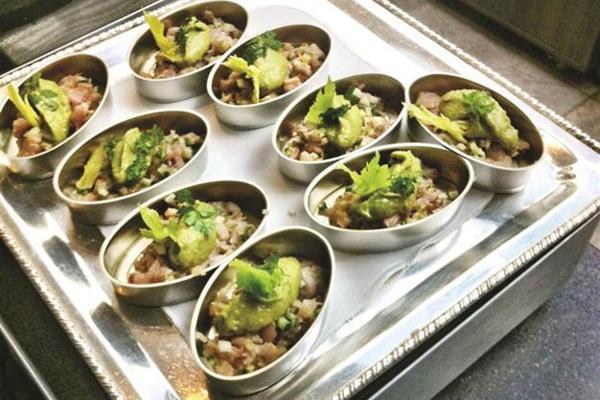Northern Lights on Bosphorus
Aylin Öney TAN - aylin.tan@hdn.com.tr


Last week Norway’s King Harald V and Queen Sonja were on an official state visit to Turkey. There was a Norwegian breeze in the culinary scenes both in Ankara and Istanbul, dinners and receptions held to their honor. When I received an invitation to attend a dinner at Lâledan restaurant, Çırağan Kempinski hosted by Elisabeth Aspaker, the Minister for Fisheries and Coastal Affairs, savory memories of
Norwegian tastes flashed like Northern lights in my mind. Naturally the menu prepared by chef Jostein Medhus was an all fish evening with the support of the Norwegian Seafood Council; I have to admit that I wanted to see more of the other Norwegian products and dishes. The fishes from the clear cold waters of Norwegian fisheries are infamous, but there is a lot to discover about Norway. Norwegian chefs in the past years have made a tremendous leap, winning four gold, two silver and two bronze medals in the prestigious Bocuse d’Or competition.
Norwegian Seafood Council hopes the Turkish palate will be adjusted to Norwegian fishes and eventually creating Turkish dishes with Norwegian fishes. Well, this has already happened. All the balık-ekmek (fish & bread) stalls along the Golden Horn have long ago switched to the Norwegian stuff. Though not sounding ethical for dedicated locavores, this might be actually good to sustain the local fishes of Istanbul. In reality, real Istanbulites will never give up on their Bosphorus fishes, only if they can find them. Fortunately, now there are new initiatives like the “Don’t Let the Lüfer Go Extinct!” campaign, led by Slow Food working with local fishing cooperatives, chefs and fishmongers to encourage action raising awareness on protecting the much appraised local blue fish. In another project the migration of bonitos of Bosphorus along the Mediterranean and Black Sea is being monitored by a collaborative plan by Metro Cash & Carry and the Turkish Marine Research Foundation, aiming at supporting sustainable fishing protecting the migrating bonito generation. If we really want to succeed in saving our beloved Istanbul fishes, we might now and then switch to Northern tastes, and leave our endangered species alone!
Recipe of the Week: The most exciting fish recipe this week is a raw bonito tartare from Aqua restaurant at Four Seasons Bosphorus. Amazingly light with a touch of lime and orange zest, it has the citrusy touch of the Sicilian chef Sebastiano Spriveri, who chooses the best seasonal fish and seafood from the Istanbul fish market. Another magic touch of this recipe is dried caper powder, which can easily be prepared at home. Just drain a jar of capers, let them dry a couple of days on a tray lined with paper towel, and then pulverize in a blender. To prepare the bonito tartar cut 4-6 bonito fillets into a fine dice with a very sharp knife. Put the chopped bonito in a bowl set on ice. Meanwhile slice a small red onion and keep onion slices in iced salty water with a splash of vinegar. Dice a small cucumber without peeling, add to the bonito. Add the zest of half a lime and a quarter of an orange, and a handful of finely chopped chives.
Add about a teaspoon of Maldon salt, and a few turns of freshly ground white pepper. Drain the red onion slices and chop them finely, add to the bonito. Finally add a teaspoon of dried caper powder and a pinch of ginger powder, mix in a generous pour of extra virgin olive oil. Mix thoroughly and serve in tiny cups set in ice. Chef Spriveri serves them in cleaned sardine cans with a dollop of guacamole.
Bite of the week
Fork of the Week:If you want to have a taste of Norway on-the-budget with a local twist, directly head for Galata Bridge or Karaköy quay. The guy standing near the bread kiosk in Karaköy delivers the just right amount of sliced onion and greens with a good sprinkling of sumac and hot peppers, all tucked in a deliciously fresh loaf of bread. A true combination of Mediterranean and Northern Seas!
Cork of the Week: Chef Sebastiano Spriveri matched bonito with Büyülübağ Sultaniye 2012, which is a fresh breeze in the glass. Sultaniye, an indigenous rape traditionally used for making dried sultanas, does miracles in the bottle as well. This one from the island of Avşa in the sea of Marmara
seems to hit the point.

